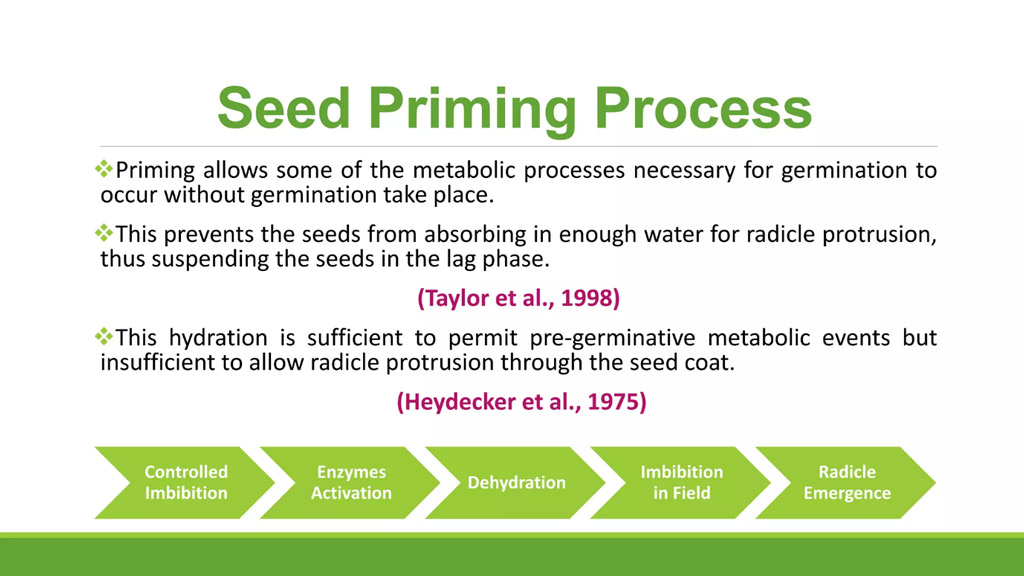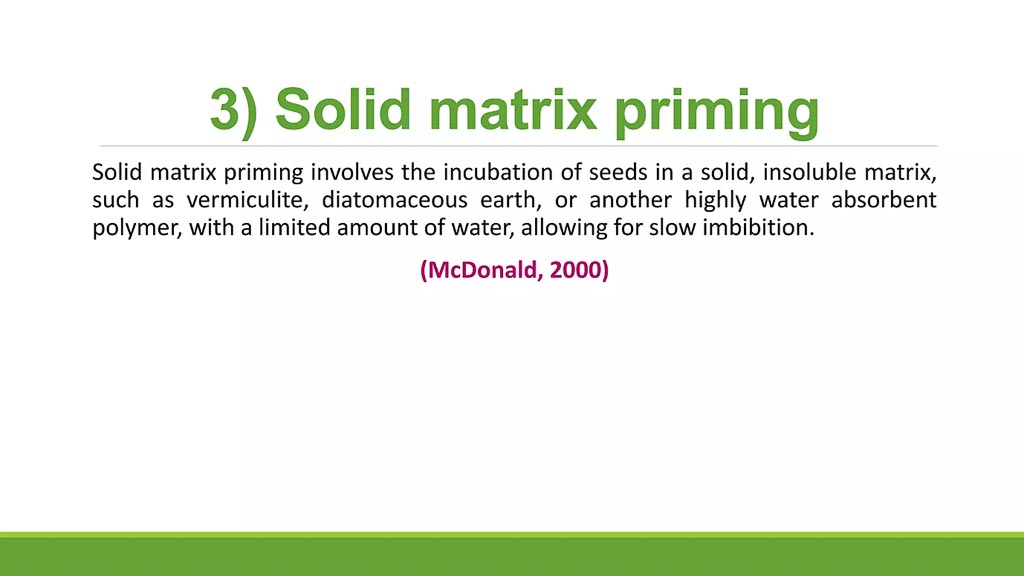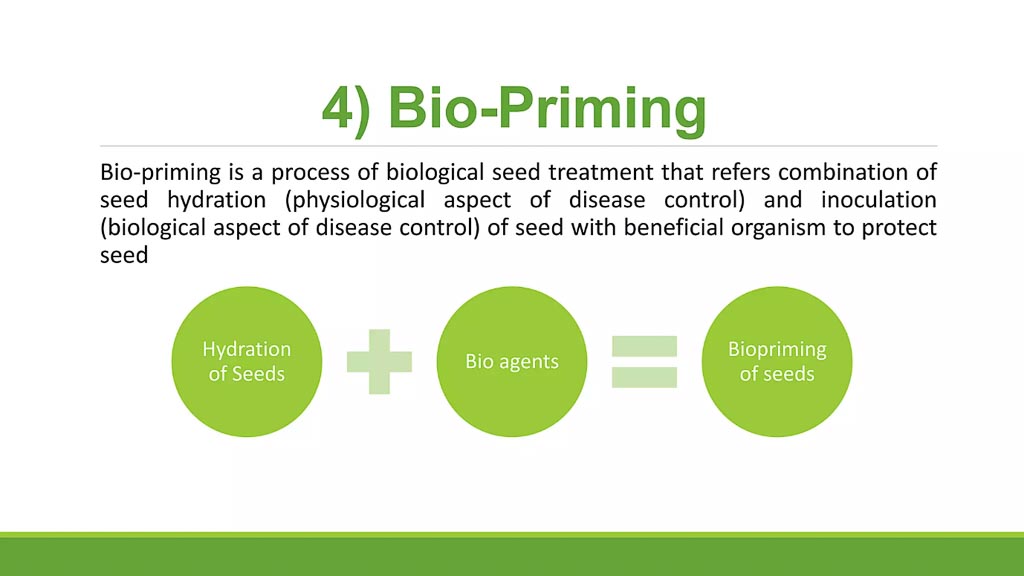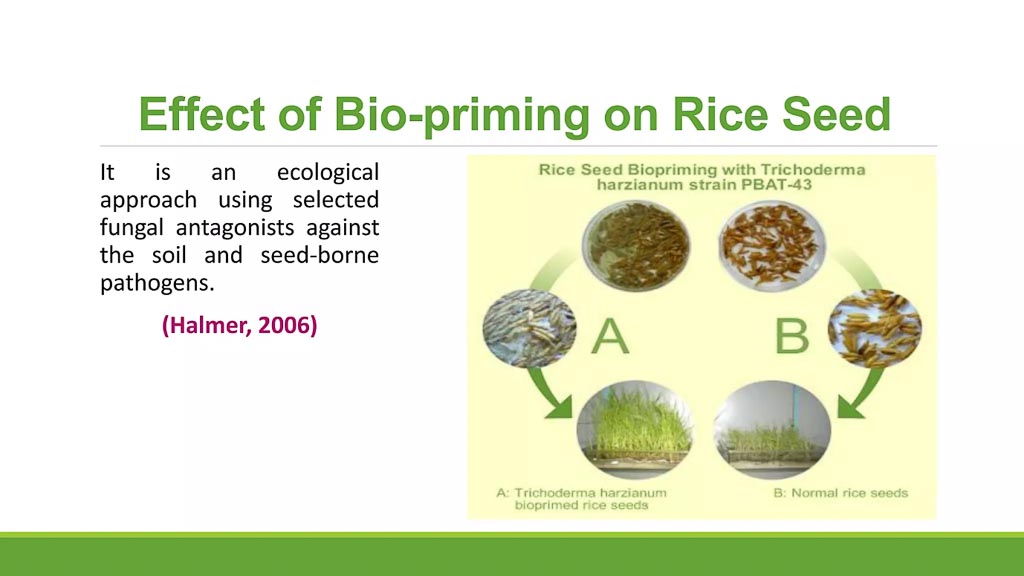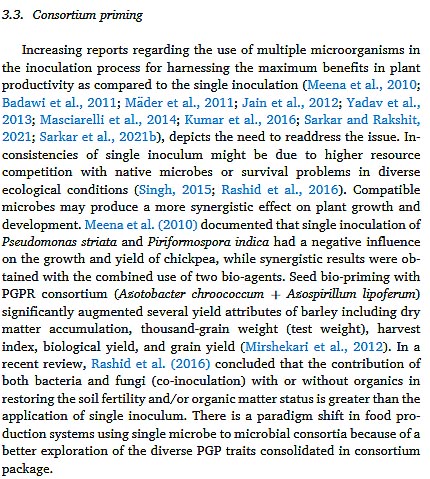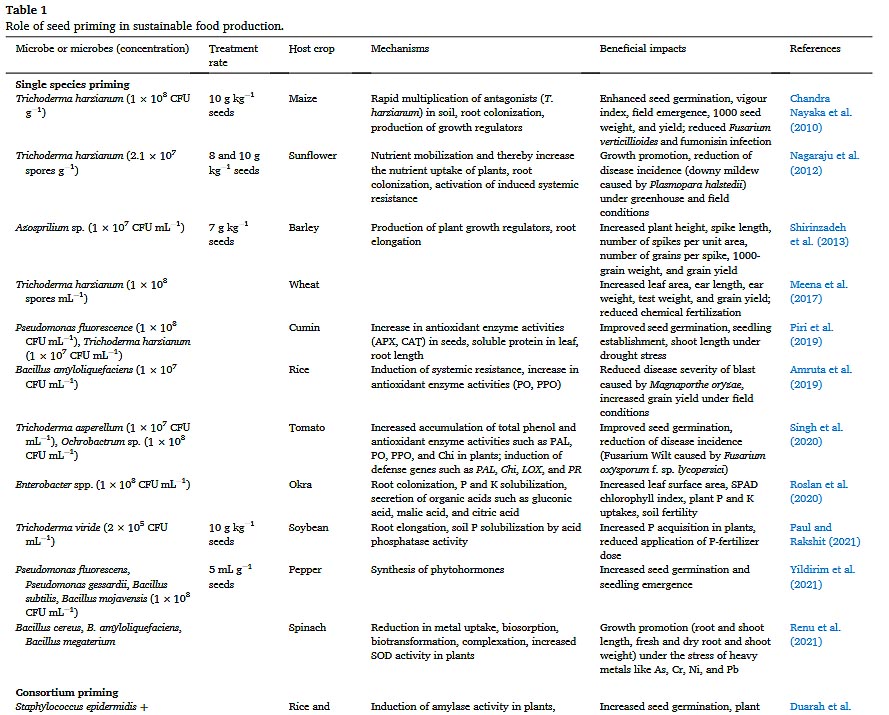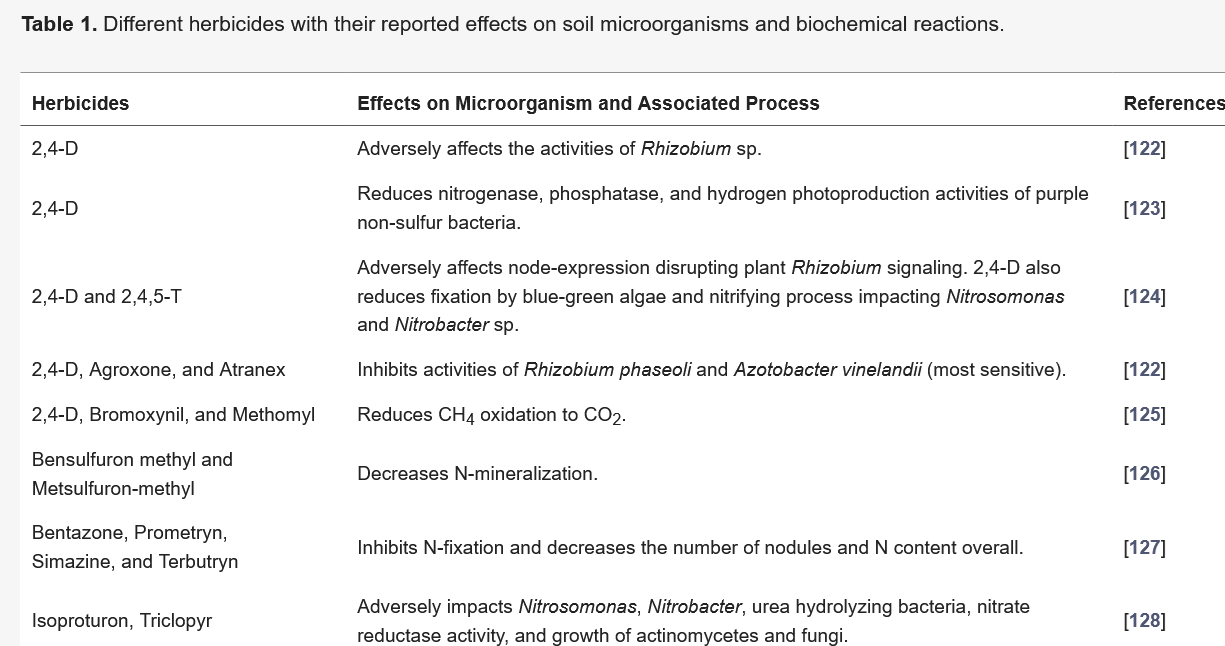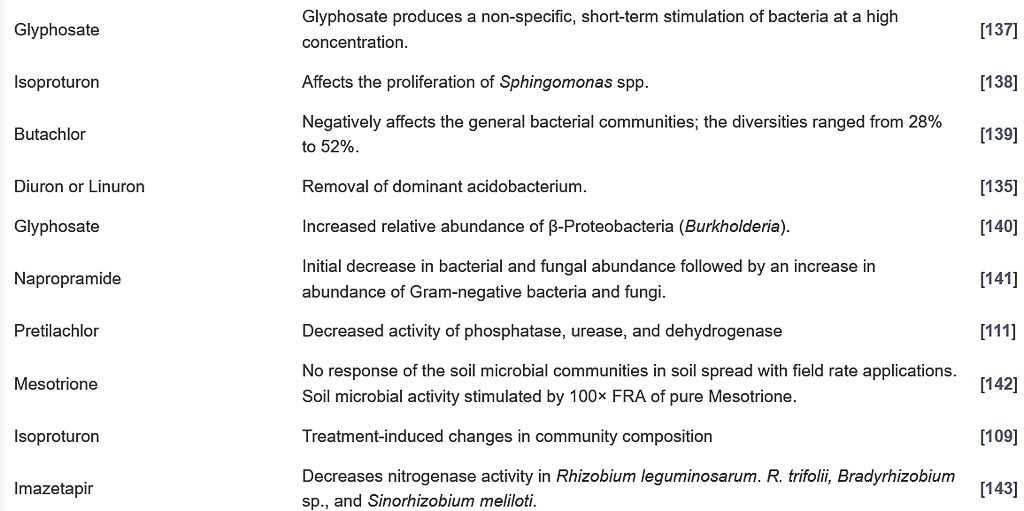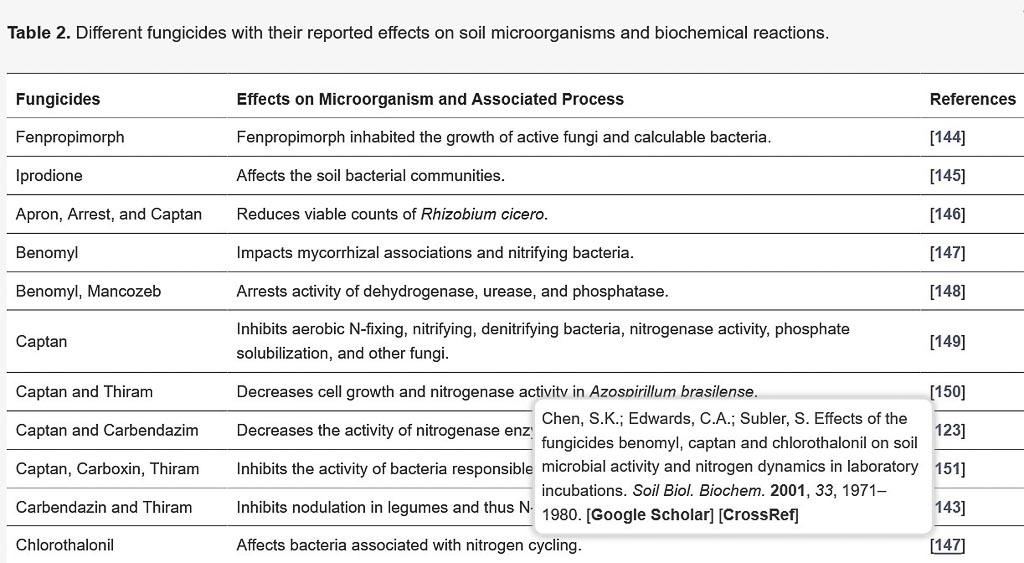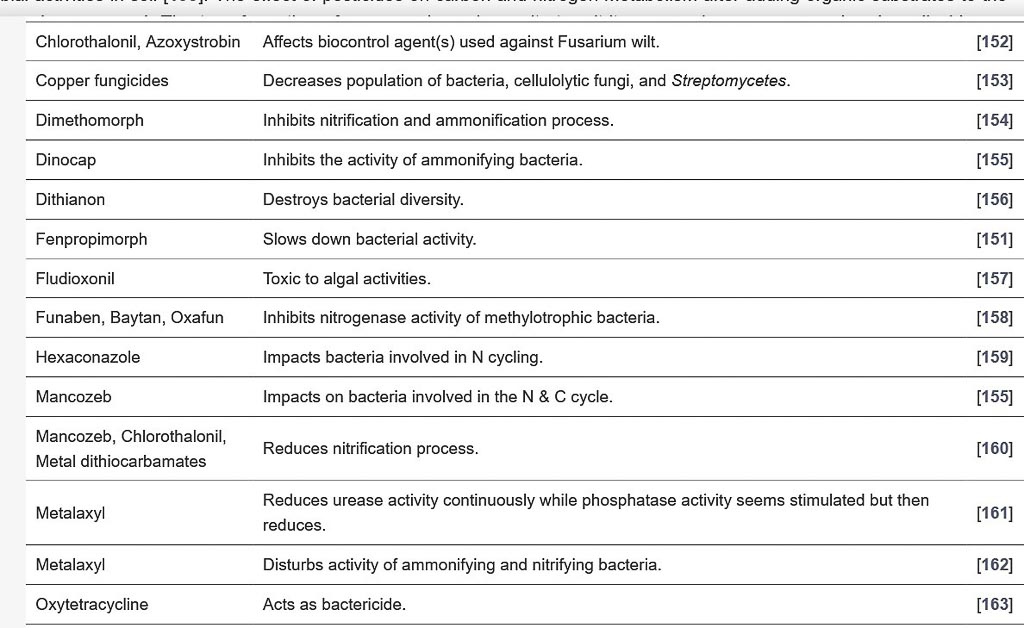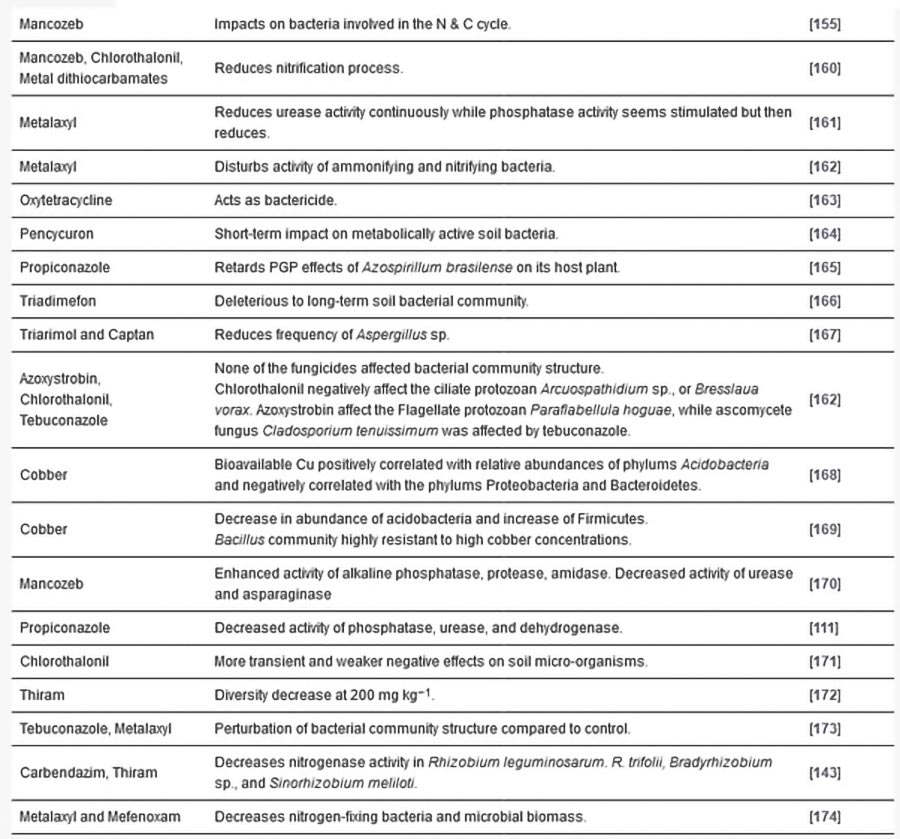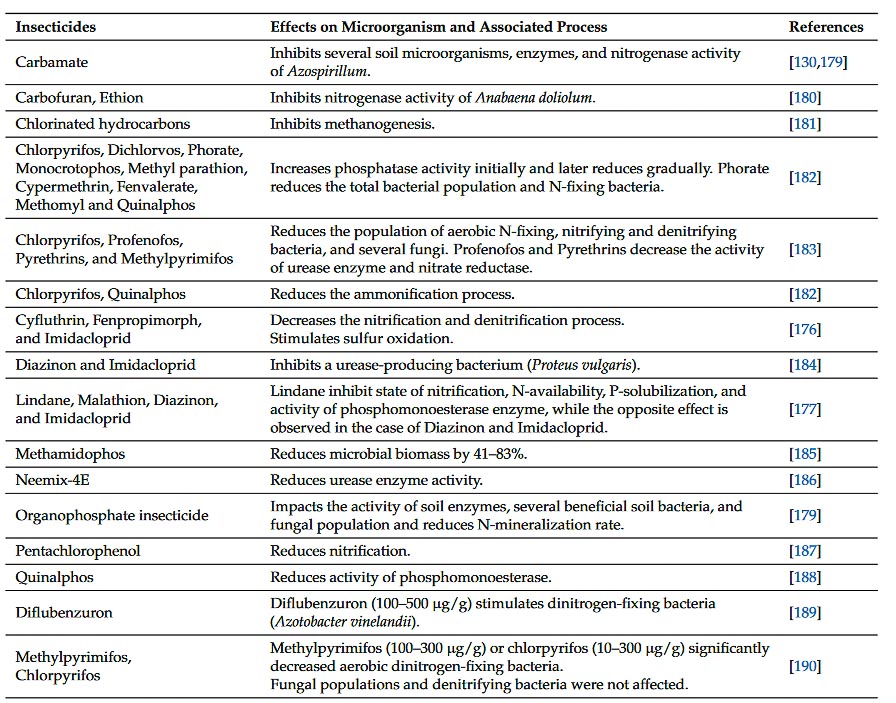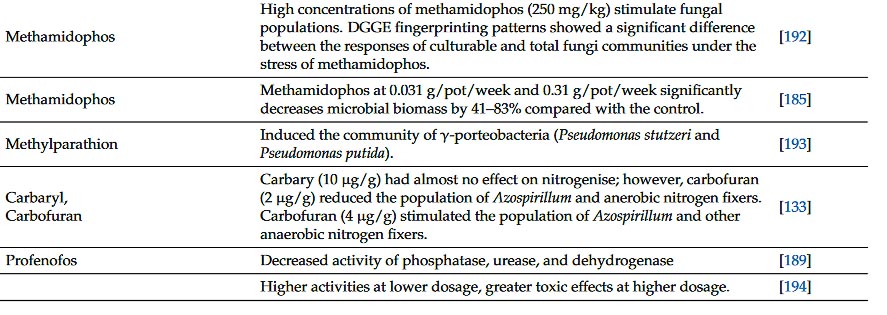Bio-Prime®:
We sell “Do It Yourself” Seed Treatment material to farmers.
What is the purpose of Bio-Priming Seed?
I. 20-40% higher yields.
II. 20-40% increased plant hardiness and stress handling ability in drought/cold/heat.
III. 20-40% improved seed/fruit quality.
The first stage of Biological Priming of seed is discussed on this www.bioprime.co.za webpage in detail, with its logic chain, value chain and background. There is a Second stage Seed Coating Phase, which is continued on www.vermicoat.com for second stage coating.
Introduction to Biological Priming of Seed:
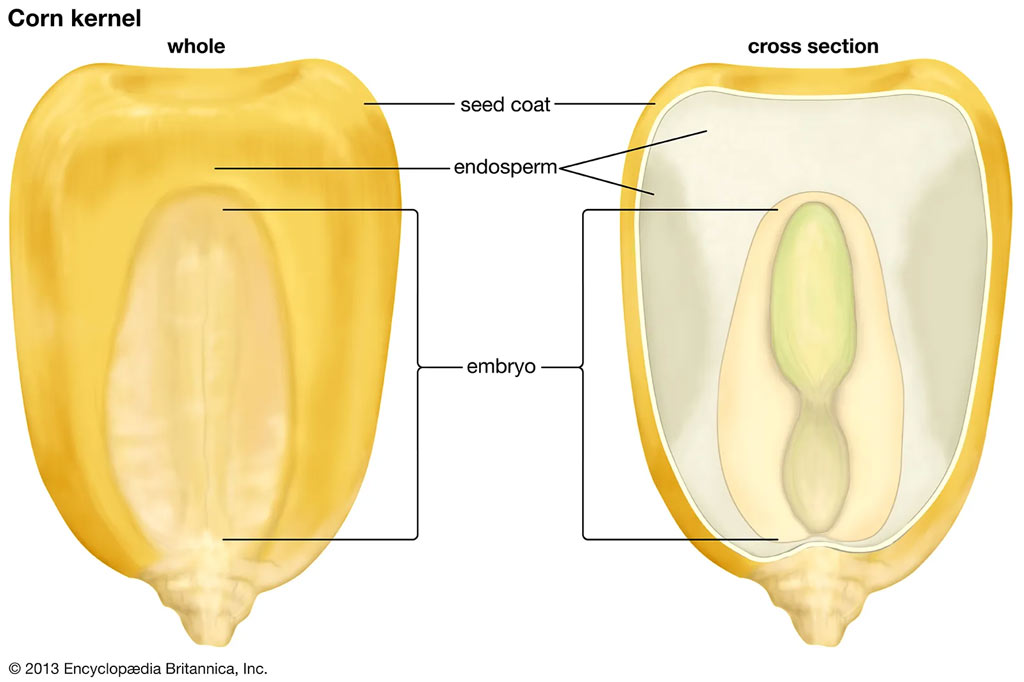
Seed Germination water requirement:
Mature seed are often extremely dry and need to absorb, through a process of imbibition, a significant quantity of water, relative to the dry weight of the seed. Generally, the minimum water content required in the grain for germination is 35% to 45% by weight.
During Bio-Priming and Seed Coating we typically add 10-20% water (roughly 50% of what is needed for full germination). This means that after planting a seed only required the other 50% water for the germination process to complete. As such, germination happens quicker.
Seed Priming:
“Seed priming is a controlled hydration technique in which seeds are soaked in a water solution to a point where germination related metabolic activities begin in the seeds but radical emergence does not occur.”
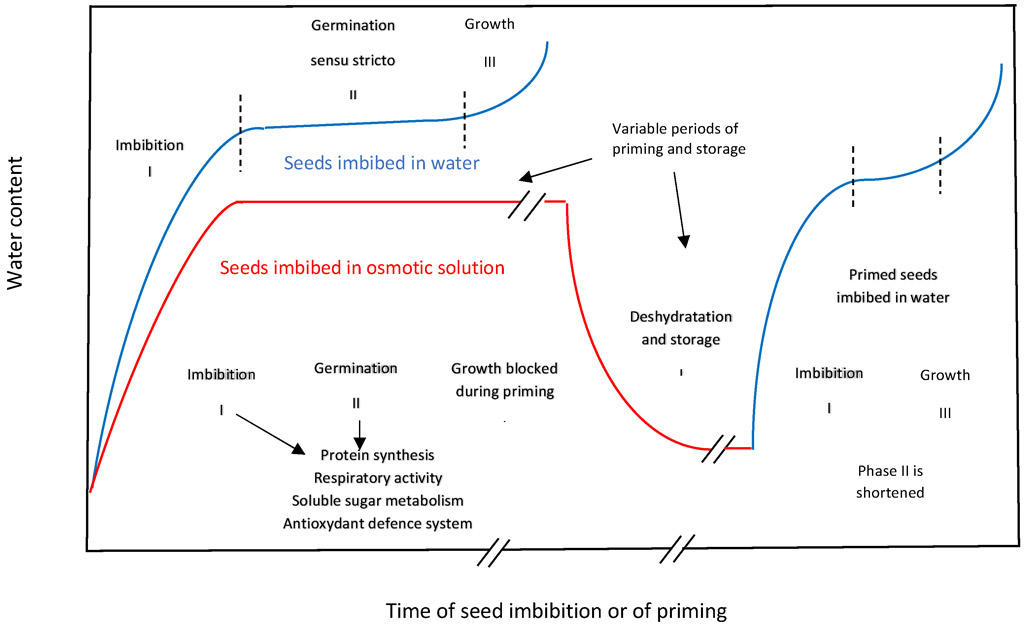
What do we use Bio-priming for in South African Commercial Agriculture?
I. Chemical/Mineral Fertilizer and pesticide use is bad for soil microbial life.
II. We use Bio-Prime® to restore Soil Microbial Diversity and Soil Function -it is a form of regenerative agriculture restoring biodiversity unto every single seed in order that the plant is able to take up the maximum amount of nutrients available in the full soil profile.
III. It means that just as crop-rotation is good for soil microbes, as just as minimum-till and no-till is good for soil structure, so Bio-Priming is another tool to improve soil health and soil function thanks to a complete diverse microbial population of soil bacteria and fungi.
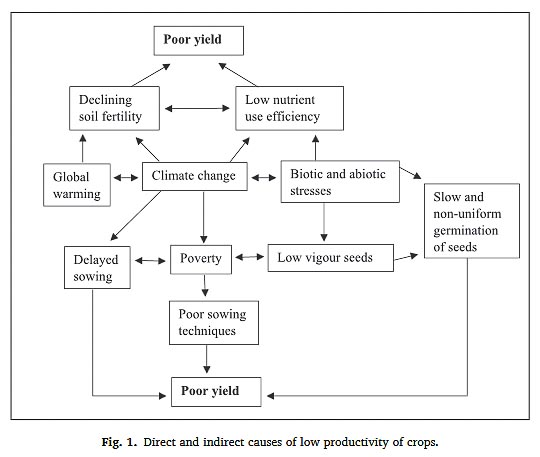
Bio-Priming is a form of microbial inoculation of seed which restores soil microbial diversity, re-enables full soil function by putting the life back into the soil. If you have dead soil, you need to Bio-Prime® the life back into it.
What Happens when you Bio-Prime® any type of Seeds?
I. You increase the Microbial Biodiversity; restoring back the specific type of soil bacteria and fungi which pesticide and mineral fertilizer kills specifically. This enables biological trading and acquisition of plant available nutrients from all the other soil microbes, especially those microbes in the deeper layers where there is more leached moisture and nutrients.
II. You thus increase the nutrient use efficiency, because putting back the missing microbes required for trade re-enables the plant to acquire and fully take up more of the nutrients in the soil.
III. The added microbes restores soil function, typically by making existing nutrients available in a plant available form.
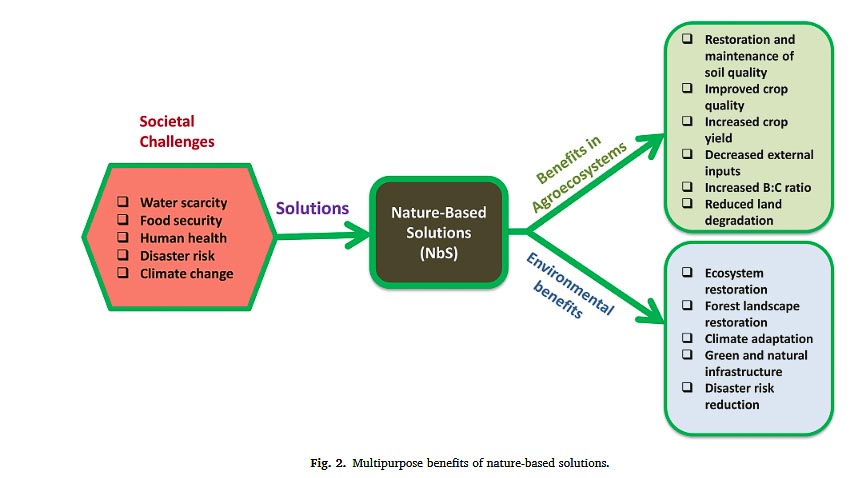
Negative Impact of active herbicide ingredients on Soil Microbial Diversity and Function:
Research Background and further downloads:

Long term use of Pesticides, Herbicides, Fungicides and mineral fertilizers thus leads to a loss of soil microbial diversity without the farmer even being aware. Bio-Prime® restores the missing biology back into the soil and plant Rhizophere.
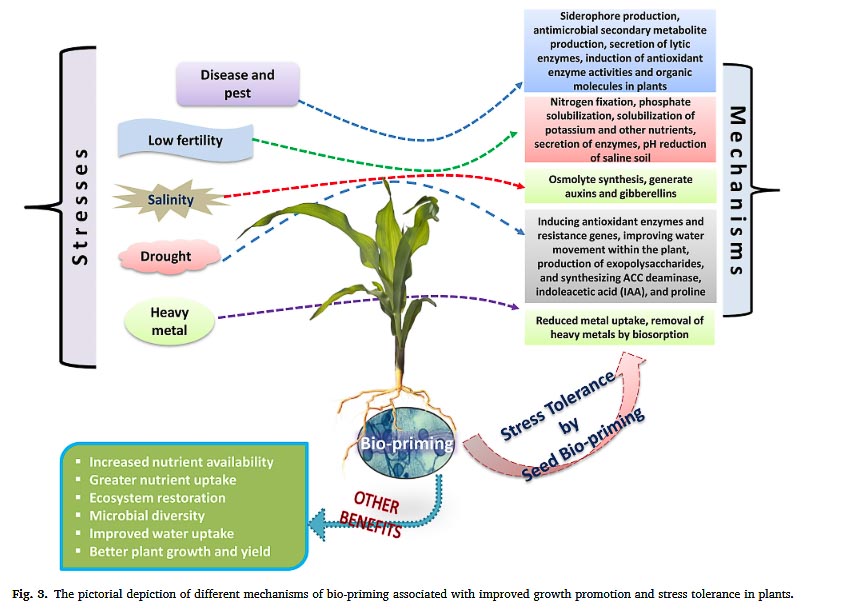
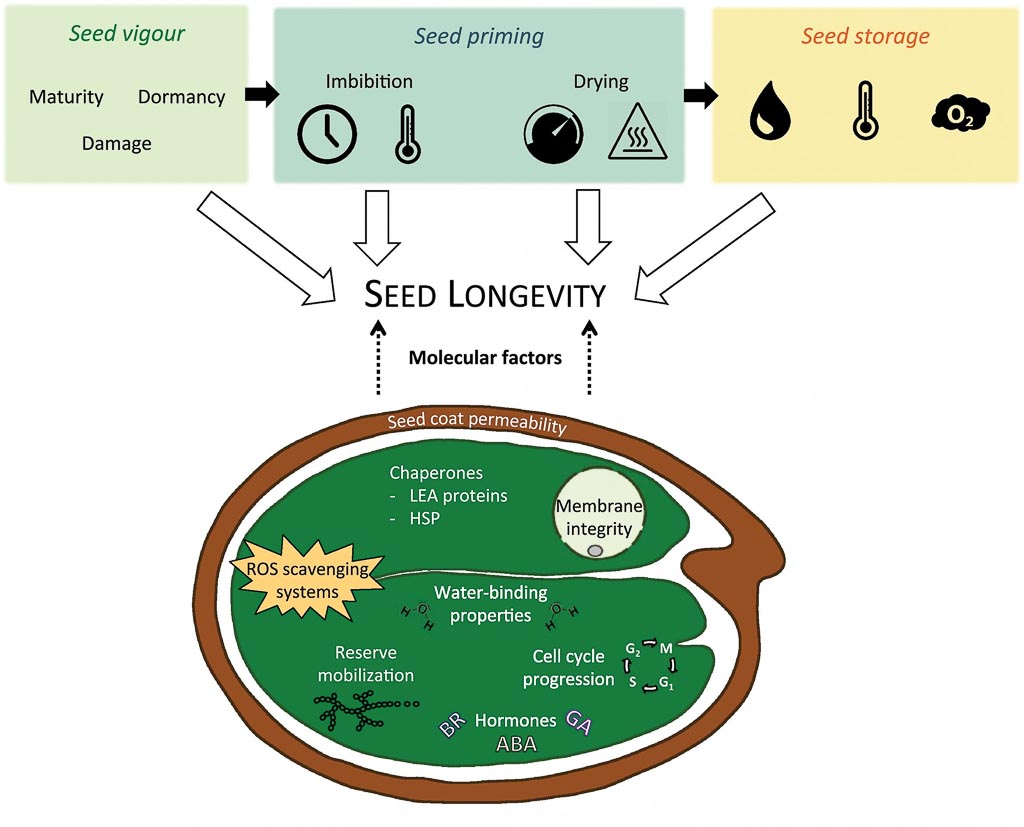
What we do is to place the exact right Seed Priming and Coating material into the farmers hands for on farm priming, just prior to planting. This restores soil biology and triggers yield gains.
